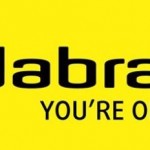How to Find the Data and the People that Will Help You Succeed – Article by Holger Reisinger, Head of Global Marketing at Jabra
We lose billions of dollars every year and waste hours and hours of valuable time and talent by failing to share information and make data and skills available to our colleagues. This constant reinvention of the wheel will eventually impact your nightly rest, as well as your budget.

“Right now, I am staring into the abyss, Holger!” gasped Lena, a newly appointed COO of a large technology vendor. She was talking to me about the shared drive: the centre of her new organisation’s heart and history, containing every sales pitch, product manual, and budget ever made. “The other drives all look the same. I wonder how anyone gets anything done – I don’t even know where to start!”
Lena is not alone here. We, as corporations, often run into this problem, constantly and continuously reinventing the wheel. Granted – it happens across large organizations, indifferent departments, and different teams, but it is nonetheless the same wheel, invented over and over again, because we struggle to share information with the rest of the corporation.
This, I feel, is deeply connected to another issue – the organic networks within our organizations often turn out not to be large enough to have any real impact. This, coupled with the fact that company biography rosters are rarely up to date, means that teams spend excessive amounts of time trying to find information or in-house experts – and failing at it, only to end up hiring outside help and leaving the in-house help with idle time on their hands.
This is bad for two reasons: aside from the obviously unnecessary expense, it keeps important knowledge and expertise outside the organization, which prevents us from creating the corresponding in-house expertise and specialist skills. And, it prevents us from sharing best practices and working towards knowledge and becoming the learning corporation that we all want to become.
We lose billions by not sharing
Tactically and strategically, not sharing knowledge and information in a structured and dynamic way on a day-to-day basis is inefficient and expensive. In fact, Fortune 500 companies lose roughly $31.5 billion a year by failing to share knowledge. Thirty-one point five billion dollars! For the sake of comparison, that is just a little shy of the entire 2014 profits of ExxonMobil – the sixth largest company in the world.
Fortunately, new networking tools and work methodologies can make the entire organisation available at the click of a button. All we really need to ask ourselves is: “Am I tired of spending development time and money on absolutely nothing?”
I bet you are. Frankly, you would be foolish not to, because you know, as well as I do, that many of the resources, plans, and templates, which are routinely re-invented, are available somewhere in the abyss of information and data on that all-encompassing server, just as the people with the right experience and skillset are often just across the hall, and are more than likely eager to help. So, what should you do?
Three steps to managing your knowledge gold mine
There are a few more than three steps, I concur. For example, Lena will be spending a good deal of 2015 planning and implementing her new knowledge management structure. However, here are three main points, which will get you on your way to increased productivity and knowledge mining.
Culture
Just like the old saying goes: “In the kingdom of the blind, the one-eyed man is king!,” so that can also be said about those few of your employees who know their way around the system. Often, companies with a poor record for sharing information, have a culture of individual performance. Basically, this means that accessing data, which is available to only a few employees, becomes a personal success parameter.
This is a culture which you need to change, either before you start or during the first phases of planning the new structure. Those who stand to lose the most in terms of personal advantage will be your greatest opponents, but they can also be your greatest assets. Get them involved in the planning of the new structure. Not only do they know where the data is hidden, they can also enjoy the admiration of their peers, which softens the blow and initiates a cultural change in favor of all employees.
Technology
Getting that one button I mention above requires a system. But don’t go overboard. My first rule of thumb is not to get the coolest system with all the bells and whistles, if that particular system does not fit your needs. That goes without saying, right? Nevertheless, I see it over and over again that the project takes off and suddenly a multi-client-introspective-synergizer with double complete wiki function sounds like just the ticket for your on-site sales team. It isn’t, though – I just made up that gibberish, but my point is that you need to make up your mind about what your people need and what may be useful in the next couple of years, should your strategy succeed. Once that is decided, stick to that decision. It may not be the newest and most shiny knowledge management system, but gizmos and gadgets have never ensured success, and your employees are more likely to be able to use it to increase production, thereby saving you the extra costs for tools, time, and resources.
Measurement
Take stock of collaboration, efficiency, and productivity before you start and then measure continuously during the phases of the roll-out. Do this religiously. It is the efficiency, productivity, and collaboration you are aiming to improve with this exercise, so at the beginning and/or end of every phase, measure and celebrate improvements. Get human resources to help – they often know a trick or two about measuring productivity, and, just as importantly, they will be a great link to retrieving honest feedback, which otherwise doesn’t always reach the management team.
Also, if you measure diligently, you will avoid costly mistakes, and you will have knowledge to share with the board of directors and be able to build a great best practices story for the new structure.
Good luck – and happy mining!
 Holger Reisinger is Senior Vice President of Marketing for Products and Alliances at Jabra.
Holger Reisinger is Senior Vice President of Marketing for Products and Alliances at Jabra.
For additional information see Jabra’s Website or view their Company Profile


